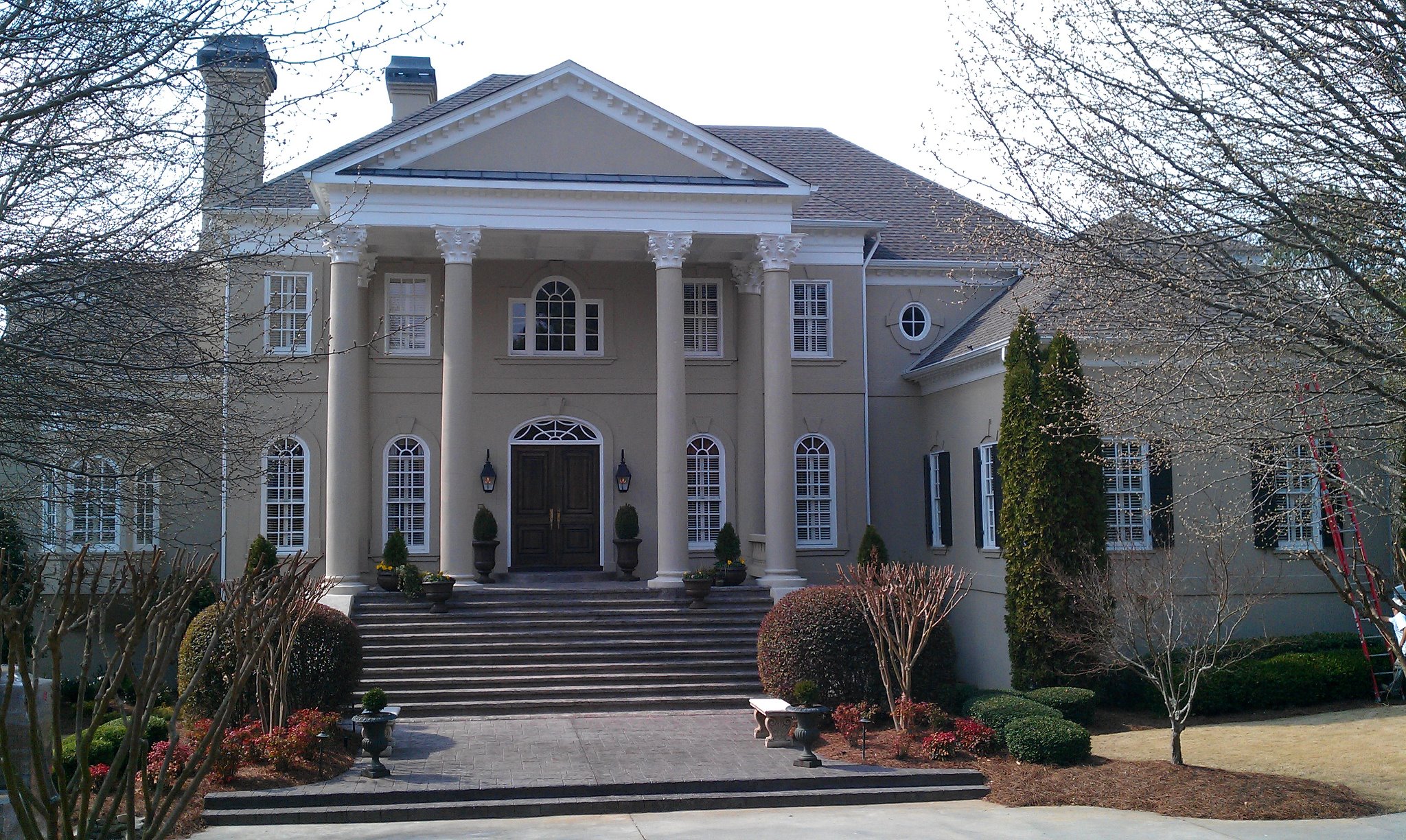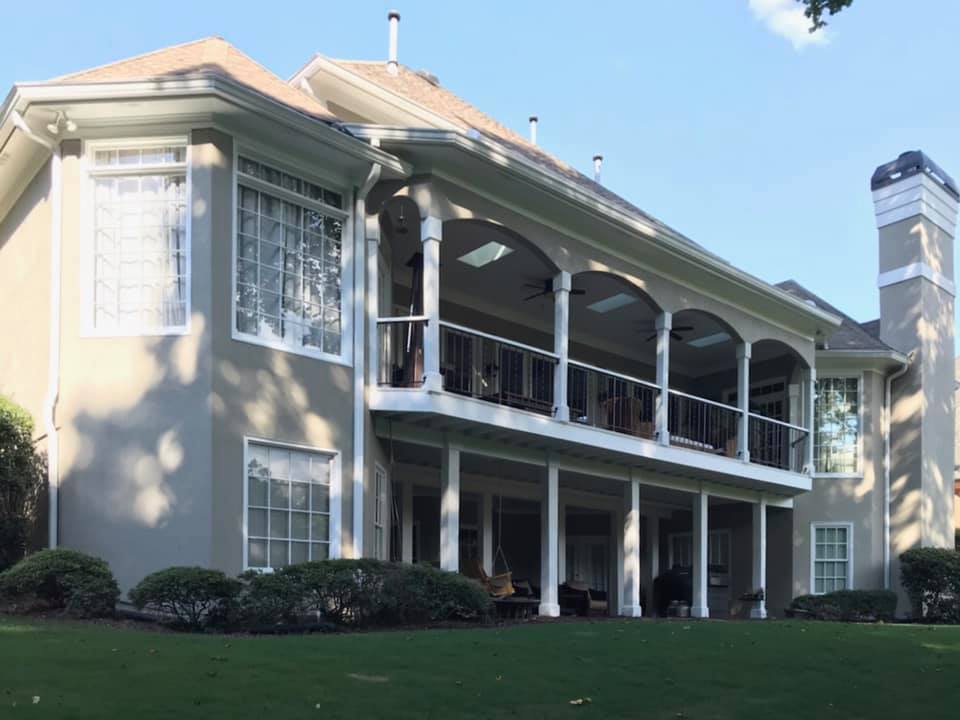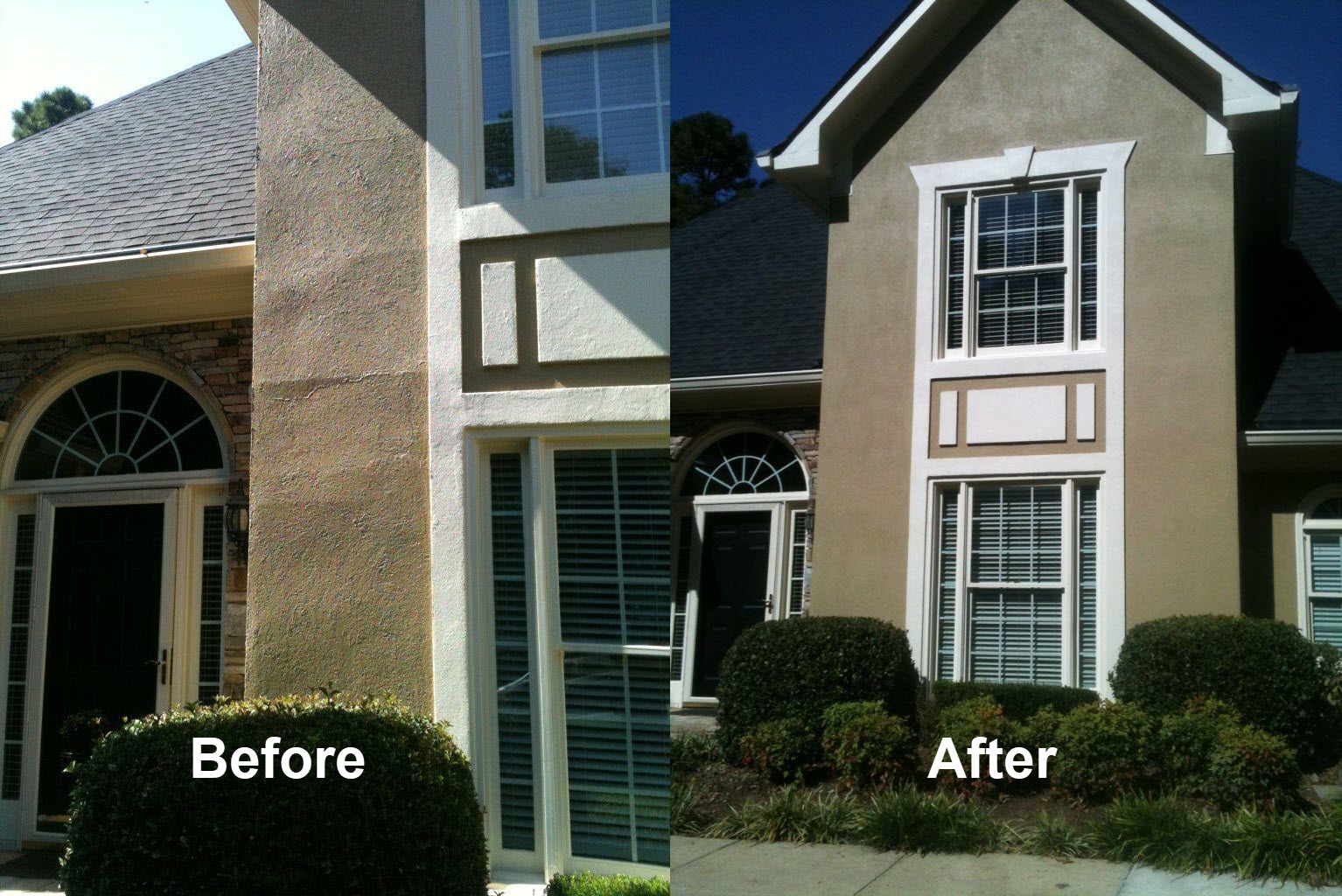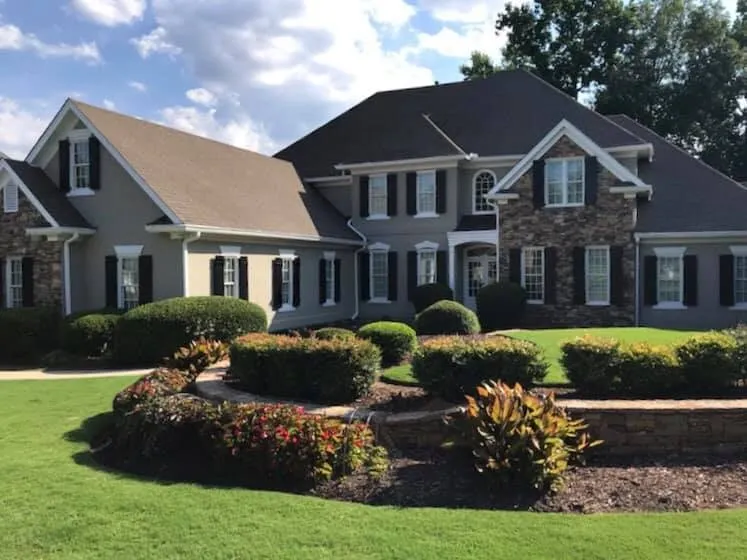Stucco Base Coatin Kennesaw GA
Stucco Base Coat for a Perfect Foundation
We Are Locally Owned & Operated For Over 24 Years
We Serve Businesses In And Around The Following Cities:
About Stucco Base Coats in Kennesaw, Georgia
Optimizing Stucco Base Coat for Successful Stucco, EIFS, and Dryvit Applications in Kennesaw, Georgia
Understanding the Role of Stucco Base Coat
In the charming city of Kennesaw, Georgia, where both heritage and modernity thrive, construction and renovation projects demand quality and precision. Whether for residential homes or commercial properties, ensuring the structural integrity and aesthetic appeal of buildings is paramount. At the heart of successful construction projects involving stucco, EIFS, or Dryvit lies the crucial step of applying a stucco base coat. This foundation not only prepares the surface for subsequent layers but also significantly enhances the durability and performance of the finished exterior.
Stucco, a popular choice for many architects and homeowners alike, relies on its base coat for robustness and longevity. Amidst the array of techniques available, varies approaches such as the one coat stucco system or the more comprehensive three coat stucco system showcase different methodologies tailored to specific needs. Nonetheless, integrating a stucco base coat into these systems is indispensable, serving as the first significant layer in the application process. In Kennesaw, where humidity and weather patterns can challenge building exteriors, ensuring a high-quality base coat forms an integral part of long-term property maintenance.
Process of Applying a Stucco Base Coat
The application of a stucco base coat might seem straightforward, yet it demands expertise and attention to detail. Advanced Stucco Repair, a trusted service provider in Kennesaw, Georgia, exemplifies professional execution in this domain. It begins with surface preparation, a step often underestimated. Cleaning the substrate, repairing any damage, and ensuring a rough finish for better adhesion set the stage for the base coat. Selecting the appropriate material also matters; options like Quikrete stucco base coat offer versatile solutions suitable for varied applications.
When it comes to the actual application, the stucco base coat is typically troweled onto the prepared surface. For those favoring the traditional three coat system, this initial scratch coat is ensured to be approximately 3/8 inch thick, providing a rugged texture for the brown coat to adhere effectively. On the other hand, the one coat stucco system, favored for its efficiency, utilizes a thicker base coat which combines the scratch and brown coats, minimizing application time while retaining structural integrity.
Timing and conditions play critical roles in the curing process. In Kennesaw, fluctuating temperatures and humidity levels can impact the drying time, necessitating careful management. Ensuring the base coat receives sufficient time to cure prevents future structural issues, a common pitfall for ill-prepared projects.
Benefiting from Elastomeric Coating
To fortify the exterior further, an elastomeric coating for stucco is an excellent choice. This flexible, weather-resistant layer protects against water intrusion and cracking, a known concern for stucco facades exposed to Georgia's climate variations. When layered over a well-cured stucco base coat, elastomeric coatings provide an additional barrier, significantly enhancing the longevity of the exterior finish.
The resilience of elastomeric coatings against UV rays and moisture ensures minimal maintenance, a critical consideration for property owners looking to invest wisely in their building's facade. Integrating this coating after completing a flawless stucco base coat application showcases a commitment to high-quality craftsmanship, a hallmark of Advanced Stucco Repair’s services.
Real-world Applications and Success Stories
In recent years, multiple case studies around Kennesaw highlight the importance of expertly applied stucco base coats. Residential projects often feature custom stucco finishes, where a homeowner's vision meets reality. In these instances, the use of premium stucco coatings and meticulous application processes can transform an ordinary home into a standout architectural feature. Advanced Stucco Repair has been pivotal in projects where precision in the base coat laid the groundwork for aesthetically pleasing and durable finishes.
Commercial buildings, on the other hand, not only require aesthetic appeal but must also meet stringent regulations and standards. Competitive businesses in Kennesaw benefit from the protective attributes of a high-quality stucco base coat. With Advanced Stucco Repair’s comprehensive understanding of local building codes and environmental challenges, their interventions yield facades that can withstand the test of time and weather.
The Versatility of Hard Coat Stucco
Hard coat stucco systems, when executed with a vigilant focus on the base coat, deliver a durable, fire-resistant, and energy-efficient building exterior. These benefits are particularly apparent in commercial applications, where long-term investment returns are crucial. The traditional appeal of hard coat stucco, combined with modern-day advancements such as improved base coat formulations and elastomeric finishes, fulfills both functional and aesthetic criteria.
The foundational strength provided by a meticulously applied stucco base coat complements the tough, enduring nature of hard coat stucco. Such systems are increasingly favored in the Kennesaw region for new constructions and renovations alike, reflecting a blended appreciation for historical legacies and modern efficiencies.
Choosing the Right Professionals
Given the complexities and specific requirements of applying a stucco base coat, trusting professionals like Advanced Stucco Repair ensures that every step of the process is executed flawlessly. Their expertise in choosing the right materials and techniques tailored for Kennesaw's unique conditions eliminates potential pitfalls associated with amateur handling. Their commitment to excellence in both residential and commercial projects is well-acknowledged, making them a preferred choice for those seeking reliability and quality in stucco applications.
Advanced Stucco Repair’s track record reflects a deep understanding of the nuances involved in different stucco systems. Their attention to the initial base coat paves the way for finished exteriors that satisfy both regulatory standards and individual client expectations, emphasizing why expert intervention is invaluable for achieving lasting success. Whether encountering challenges in substrate preparation, choosing between a fog coat or elastomeric coatings, or deciding on a one coat versus three coat system, professional advice facilitates informed decisions, ensuring the best possible outcome.
Their appreciation for Kennesaw’s architectural landscape further underlines their adeptness at harmonizing technical requirements with aesthetic preferences. Thus, selecting a reliable expert like Advanced Stucco Repair is a decision poised to benefit any property owner or developer invested in sustainable and visually appealing building solutions.
In today’s competitive market, the quality of a building’s exterior often influences perceptions. Businesses that dedicate resources to superior coatings not only see enhancements in property values but also in tenant satisfaction and consumer appeal. It’s a testament to the effectiveness of a well-applied stucco base coat that businesses across Kennesaw turn to expert services, ensuring their investment yields optimal returns.
Overall, as we reflect on the various elements contributing to successful stucco applications, from precision in stucco scratch coats to strategic use of elastomeric coatings, the essential role of an expertly applied stucco base coat is clear. Skilled application, as offered by Advanced Stucco Repair, places properties in Kennesaw on a path to aesthetic excellence and structural reliability, crafting lasting impressions that endure through changing environments and evolving architectural trends.
Stucco Base Coats Gallery



Call Us Today to receive your Free Quote for
Stucco Base Coat in Kennesaw
Serving: Kennesaw, Georgia

About Kennesaw, Georgia
As the Western and Atlantic Railroad was being built in the late 1830s, shanty towns arose to house the workers. These were near a big spring. A grade up from the Etowah River became known as "the big grade to the shanties", then "Big Shanty Grade", and finally "Big Shanty".
Camp MacDonald, a training camp, was located there from 1861 to 1863.
During the Civil War, Big Shanty was the site of major fighting in the Battle of Kennesaw Mountain, part of the larger Atlanta Campaign. Kennesaw Mountain National Battlefield Park, located southeast of the city limits, now contains many of these historic areas. Much of the surrounding land has been developed, and many of the buried artifacts have been searched for and taken by people with metal detectors. Some artifacts of the Civil War are still on display in the visitor center of Kennesaw Mountain.
L.C. Chalker purchased a 1.25-acre (0.51 ha) tract of land adjacent to the Kennesaw Cemetery from J.W. Ellis in 1934, which was sold for burial purposes. Chalker purchased another 1 acre (0.40 ha) adjacent to the first parcel in 1948, which was also to be used for a cemetery. The Chalker family managed these portions of the cemetery until they were sold to the City of Kennesaw in the mid-1950s. The earliest known burial is the infant Lucius B. Summers, who was interred in 1863. Other grave markers date as far back as the 1860s to the 1890s. Civil War veterans are buried here. The Kennesaw Cemetery is still in use.
In March 2004, First Lady Laura Bush designated Kennesaw a Preserve America Community.
Kennesaw is located in northwestern Cobb County, bordered by the city of Acworth to the northwest. Kennesaw Mountain is located southeast of the city limits in the battlefield park. Its summit is the highest point in the Atlanta metro area, at an elevation of 1,808 feet (551 m) above sea level. The city was renamed for the mountain.
U.S. Route 41 and State Route 3 pass through the city as Cobb Parkway, leading southeast 7 miles (11 km) to Marietta and northwest 17 miles (27 km) to Cartersville. Interstate 75 passes just northeast of the city limits, with access from exits 269, 271, and 273. Via I-75, downtown Atlanta is 27 miles (43 km) to the southeast, and Chattanooga, Tennessee, is 94 miles (151 km) northwest.
The iconic peaks of Kennesaw Mountain are visible from the bridge over Interstate 75 that crosses over the city limits of Kennesaw.
According to the United States Census Bureau, Kennesaw has a total area of 9.5 square miles (24.7 km), of which 9.4 square miles (24.4 km) is land and 0.12 square miles (0.3 km), or 1.08%, is water.
Kennesaw has a humid subtropical climate (Köppen climate classification: Cfa). On November 22, 1992, an F-4 tornado caused 34 injuries.
| Census | Pop. | Note | %± |
|---|---|---|---|
| 1880 | 244 | — | |
| 1890 | 168 | −31.1% | |
| 1900 | 320 | 90.5% | |
| 1910 | 573 | 79.1% | |
| 1920 | 467 | −18.5% | |
| 1930 | 426 | −8.8% | |
| 1940 | 436 | 2.3% | |
| 1950 | 564 | 29.4% | |
| 1960 | 1,507 | 167.2% | |
| 1970 | 3,548 | 135.4% | |
| 1980 | 5,095 | 43.6% | |
| 1990 | 8,936 | 75.4% | |
| 2000 | 21,675 | 142.6% | |
| 2010 | 29,783 | 37.4% | |
| 2020 | 33,036 | 10.9% | |
| U.S. Decennial Census 1850-1870 1870-1880 1890-1910 1920-1930 1940 1950 1960 1970 1980 1990 2000 2010 | |||
| Race | Num. | Perc. |
|---|---|---|
| White (non-Hispanic) | 17,102 | 51.77% |
| Black or African American (non-Hispanic) | 7,848 | 23.76% |
| Native American | 67 | 0.2% |
| Asian | 1,626 | 4.92% |
| Pacific Islander | 17 | 0.05% |
| Other/Mixed | 2,119 | 6.41% |
| Hispanic or Latino | 4,257 | 12.89% |
As of the 2020 United States census, there were 33,036 people, 12,803 households, and 8,250 families residing in the city.
As of the census of 2010, there were 29,783 people, 11,413 households, and 7,375 families residing in the city. There were 12,328 housing units at an average density of 1,027.3 per square mile (396.6/km). The racial makeup of the city was 58.9% White, 22.3% Black, 10.8% Hispanic or Latino of any race, 5.3% Asian, 0.4% Native American, 0.02% Pacific Islander (U.S. Census), 4.7% of other races, and 3.0% non-Hispanic mixed of two or more races.
There were 11,413 households, out of which 38.1% had children under the age of 18 living with them, 45.0% were married couples living together, 15.2% had a female householder with no husband present, and 35.4% were non-families. 26.8% of all households were made up of individuals, and 6.4% had someone living alone who was 65 years of age or older. The average household size was 2.59 and the average family size was 3.18.
In the city, the population was spread out, with 27.0% under the age of 18, 10.6% from 18 to 24, 33.2% from 25 to 44, 21.8% from 45 to 64, and 7.3% who were 65 years of age or older. The median age was 32 years. For every 100 females, there were 95.6 males. For every 100 females age 18 and over, there were 89.7 males.
The city hall is located downtown, just off Main Street (old U.S. 41 and State Route 3, later State Route 293). It contains the offices of mayor and city council, a basement jail, a municipal 9-1-1 call center and other offices. It is the public-safety answering point for the city of Kennesaw and the neighboring city of Acworth, and dispatches the separate police departments of both cities. Calls for fire services are relayed to and dispatched from Cobb County's 911 center, and serviced by the Cobb County Fire Department, as neither city has its own fire department.
In 2008, the city of Kennesaw awarded a bid to Digitel Wireless for the implementation of city wireless Internet. In March 2008, the city of Kennesaw announced the grand opening of four new wireless areas: Swift-Cantrell Park and Adams Park, and the train depot area across from the Southern Museum of Civil War and Locomotive History. The city has also provided Wi-Fi in the Ben Robertson Community Center.
In 2001, violent crime rates were about 60% below national and state rates. Property crime rates were from 46–56% below national and state rates. From 1999 to 2011, Kennesaw crime statistics reported that both property and violent crimes had decreased, though from 2003 to 2008 the trend in both violent and property crime rates slightly increased. The increase in crime rate overall is attributed to the population growth rate of 37.41%. The population growth rate is much higher than the state average rate of 18.34% and is much higher than the national average rate of 9.71%.
The Cobb County Public Library System operates a Kennesaw branch library. The Cobb County Police Department serves unincorporated areas, including the Town Center Area Community Improvement District and Kennesaw State University (in addition to KSU's own police).
Public schools are operated by the Cobb County School District.
Elementary schools include Big Shanty Intermediate., Bullard, Chalker, Hayes, Kennesaw, and Lewis.
Middle schools include Awtrey, Lost Mountain, McClure, Palmer, and Pine Mountain.
High schools include Harrison High School, Kennesaw Mountain, North Cobb, and Kennesaw Charter Science & Math Academy.
Private schools include Sunbrook Academy at Legacy Park, Sunbrook Academy at Stilesboro, and Mount Paran Christian School.
Kennesaw State University is located within the city and is part of the University System of Georgia.
